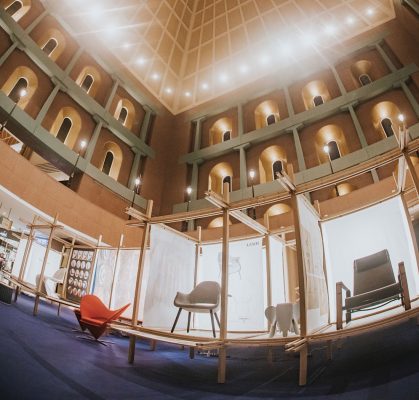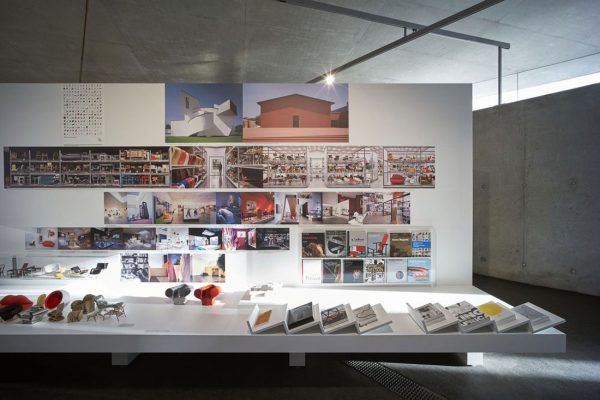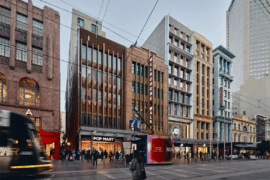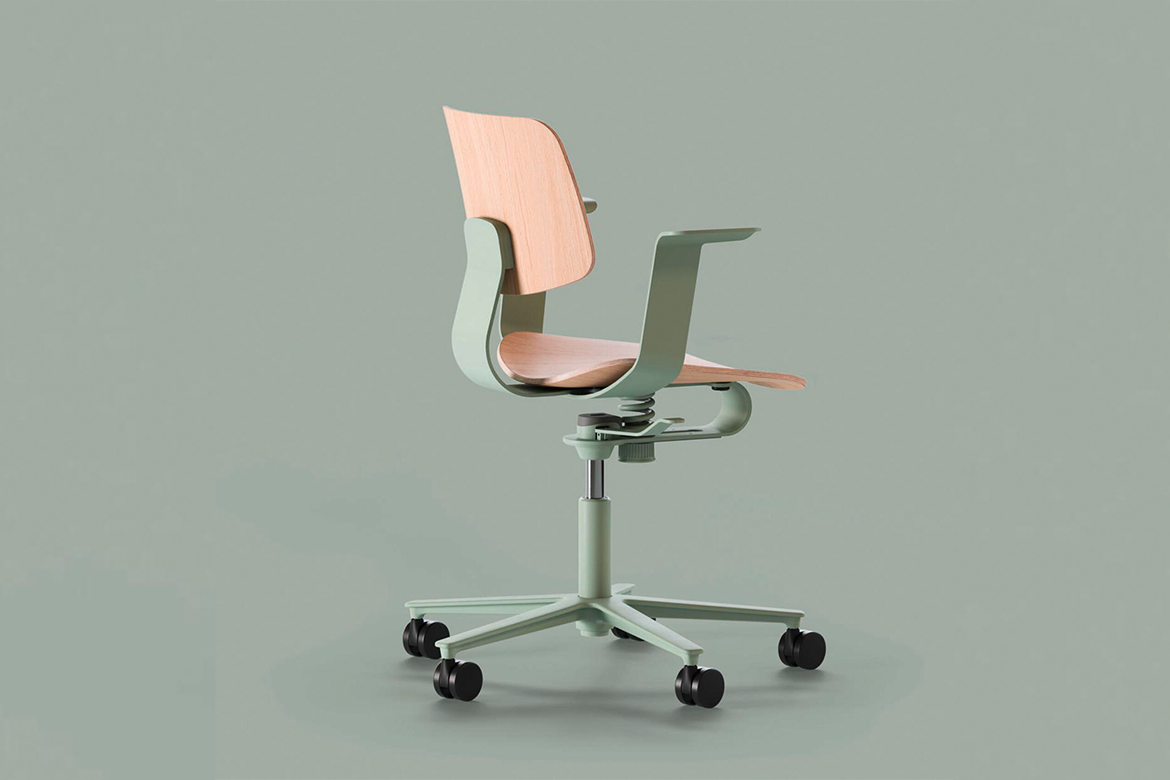What gives a brand longevity and resilience? Who better to ask than Nora Fehlbaum, the CEO of Vitra? We chatted at Vitra by Grafunkt during Singapore Design Week.

Vitra Home Collection in front of the Vitra Schaudepot, Weil am Rhein, 2017
April 11th, 2018
I’ve heard several people describe the way they became hooked on Vitra. I had the same experience. We came across a copy of the book 100 Masterpieces from the Vitra Design Museum Collection (first published in the mid-1990s) and since discovering the cultural (rather than simply commercial) underpinning of the brand, we’ve been smitten – longing to revisit the Vitra Campus in Weil am Rhein with the completion of every new building there.
The key point is that Vitra is not just a furniture brand; it is its own culture. Aside from its ever-expanding portfolio of highly original furniture pieces, Vitra (established in 1953) resonates with a strong brand identity and narrative. Vitra develops products for the home, office and public space together with contemporary designers such as Alberto Meda, Konstantin Grcic, the Bouroullec brothers and Barber Osgerby. It also holds the license for products by Charles and Ray Eames (in Europe and in the Middle East) and produces classics by Verner Panton and Jean Prouvé. Another part of Project Vitra is the Vitra Design Museum in Weil am Rhein, with its travelling exhibitions. Both product quality and brand quality are critical to Vitra’s sustained relevance.
With the roadshow The Original Comes From Vitra recently shown at Millenia Walk and a second exhibition titled Project Vitra coming to the National Design Centre (NDC) in June, Singapore has plenty of opportunity to get to know the brand better. We chatted with CEO Nora Fehlbaum at Vitra by Grafunkt during Singapore Design Week to ask our own questions.

The Original Comes From Vitra Exhibition, Millenia Walk Singapore. Image credit: Colossal Photos
What gives a brand resilience?
From the Vitra perspective, I would suggest that what counts is a unique and authentic story at the core of the brand.
For Vitra, what gives a design resilience?
We never try to be fashionable. Rather than creating something for ‘right now’, we approach new developments carefully and from differnt angles. We might be driven by the idea of a new function, to create something we are lacking in the portfolio, or trying a new production method or material. Charles Eames called this ‘the way it should be-ness’ – the appropriateness of a product. What is its use? Who needs it? It is important to work towards that rather than fulfilling some sort of trend of the moment.

The VitraHaus by Herzog & de Meuron
In your words, describe the Vitra culture and how it manifests across Vitra’s products, locations, architecture, communications, et cetera.
Fundamentally, we are inspired by the concept of collaboration. Throughout our company’s history, we’ve always worked together with designers –we refer to them as the authors. They are very intense collaborations. These relationships sometimes last decades, and also have their share of failures, problems, and products we work on for years that never make it to market. These collaborations have to be able to withstand that. There is a further effect to this kind of collaborative approach: We discover the company from different angles through the eyes of the creatives, which is extremely valuable. It allows us to move forward, while always following our internal compass.
Could you share some of the thinking behind the exhibition The Original Comes from Vitra, which is being staged in a number of venues around the world?
We feel that the stories behind designed objects are becoming increasingly relevant to our customers. People want to know: Who created this product? How is it produced? What are the materials? Where was it made? They want to know what they are investing their money in and what kind of footprint this results in. I really welcome this development. Every product has a story and we love to tell these tales. In The Original Comes from Vitra, we are sharing the stories behind our products.

Project Vitra Exhibition
What can we look forward to at the Project Vitra exhibition at NDC in June?
VItra is a company with a cultural and a commercial side – they cross-pollinate and are equally important to us. This becomes apparent in the exhibition Project Vitra. It covers all its different facets from the architecture on the Vitra Campus, to the activities of the Vitra Design Museum and its travelling exhbitions, and of course our products – the classics we have worked with for many years, as well as the contemporary products we are developing now.
How does Vitra think about the spaces we inhabit, work in and play in today? And in turn, how does this influence the design of Vitra’s products? Do the old typologies still hold relevance?
The argument I am about to make might not be new, but it is really relevant. Living spaces, work spaces and public spaces are not discrete anymore – they merge into one another. This has an effect on furniture typologies, too. Everything is becoming very fluid. We refer to this as ‘transversality’. In the past, a product might only have been used in the home, but today it could be anywhere. This is exciting for us, but it also presents a challenge. For example, products used in an airport are under much more strain then they are in a home. With transversality, the expectations of a products are hightened, but it is ultimately worthwhile because it also means that the result is a long-lasting, durable, sustainable product that will be there for many years to come.
Images © Vitra
INDESIGN is on instagram
Follow @indesignlive
A searchable and comprehensive guide for specifying leading products and their suppliers
Keep up to date with the latest and greatest from our industry BFF's!

For those who appreciate form as much as function, Gaggenau’s latest induction innovation delivers sculpted precision and effortless flexibility, disappearing seamlessly into the surface when not in use.

Merging two hotel identities in one landmark development, Hotel Indigo and Holiday Inn Little Collins capture the spirit of Melbourne through Buchan’s narrative-driven design – elevated by GROHE’s signature craftsmanship.

In Australia alone, 6.4 per cent of all waste generated comes from furniture and furnishings. In this article, we review today’s most impactful Whole Of Lifecycle Furniture practices.

The life and career of Finnish-American architect and industrial designer Eero Saarinen set the stage for some of the world’s most iconic landmarks – both in the public realm and within our very own lounge rooms and workplaces. On the 75th anniversary of his Womb Chair we take a look back over Saarinen’s career.
The internet never sleeps! Here's the stuff you might have missed

Good looks count, but function completes the space.

True sustainability doesn’t have to be complicated. As Wilkhahn demonstrate with their newest commercial furniture range.